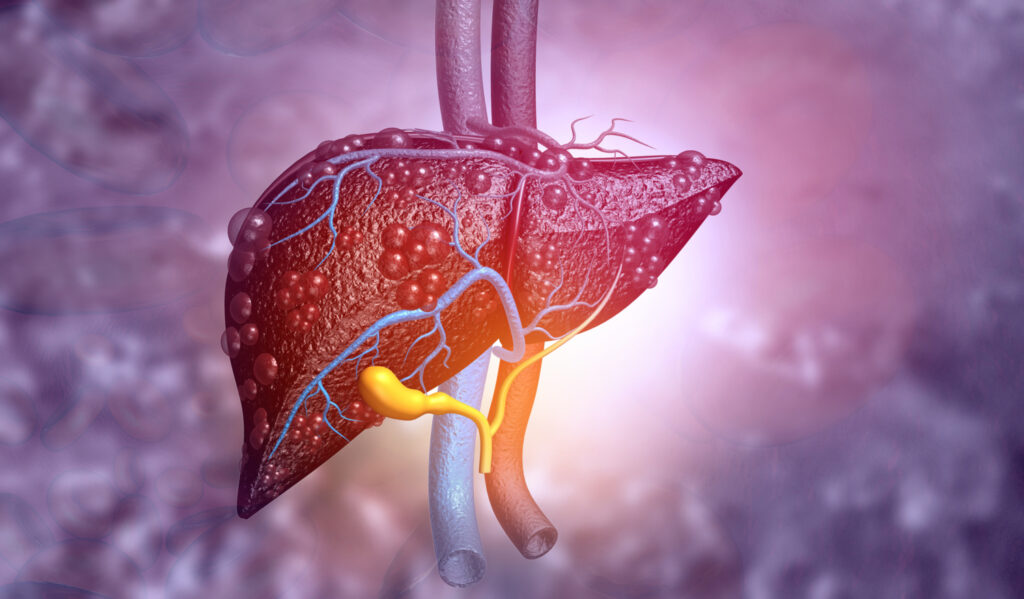
3d illustration of Abstract medical background with Diseased liver
A study conducted by researchers at Karolinska Institutet reveals that a straightforward blood analysis can accurately predict the risk of developing severe liver disease. Published in the scientific journal The BMJ, this research highlights a method that could soon be utilized in primary care settings to facilitate the early detection of serious conditions such as cirrhosis and liver cancer.
Rickard Strandberg, an affiliated researcher at the Department of Medicine in Huddinge, played a pivotal role in developing this test alongside colleague Hannes Hagström. “These diseases are becoming increasingly common and often have a poor prognosis if detected late,” Strandberg explained. The new method can predict the risk of severe liver disease within ten years, relying on three routine blood tests.
The researchers evaluated the effectiveness of their model, known as CORE, using data from over 480,000 participants in Stockholm who underwent health checks between 1985 and 1996. By monitoring these individuals for up to 30 years, they found that approximately 1.5 percent developed severe liver conditions or required a liver transplant. The CORE model demonstrated an impressive accuracy rate, distinguishing between individuals who developed the disease and those who did not in 88 percent of cases. This is a significant improvement over the currently recommended FIB-4 method.
“The tools available in primary care have not been sufficient for timely detection of severe liver disease,” Hagström noted. “The FIB-4 method is not suited for the general population and is less effective at predicting future risks.”
The CORE model is based on five factors: age, sex, and levels of three common liver enzymes—AST, ALT, and GGT—often measured during routine health checks. The aim was to create a user-friendly tool for primary care, where most patients first seek medical attention. A web-based calculator is already accessible for healthcare professionals at www.core-model.com.
This advancement represents a crucial step towards offering early screening for liver disease in primary care settings. Hagström pointed out that drug treatments are now available for individuals at high risk of developing liver diseases like cirrhosis or liver cancer, with hopes that these treatments will soon be accessible in Sweden.
The study also involved collaborations with Helsinki University Hospital, Helsinki University, and the Finnish Institute for Health and Welfare. Funding was provided by the Swedish Research Council, Region Stockholm (CIMED), and the Swedish Cancer Society.
While the CORE model has shown high accuracy in predicting liver disease risk, the researchers acknowledge that further testing is necessary in groups at particularly high risk, such as those with type 2 diabetes or obesity. Additionally, there is a need to integrate the model into medical record systems to maximize its clinical utility.
The findings from this important study, titled “Use of new CORE risk score to predict 10 year risk of liver cirrhosis in general population: population based cohort study,” are set to make a significant impact on how liver disease is detected and managed in healthcare systems globally.






